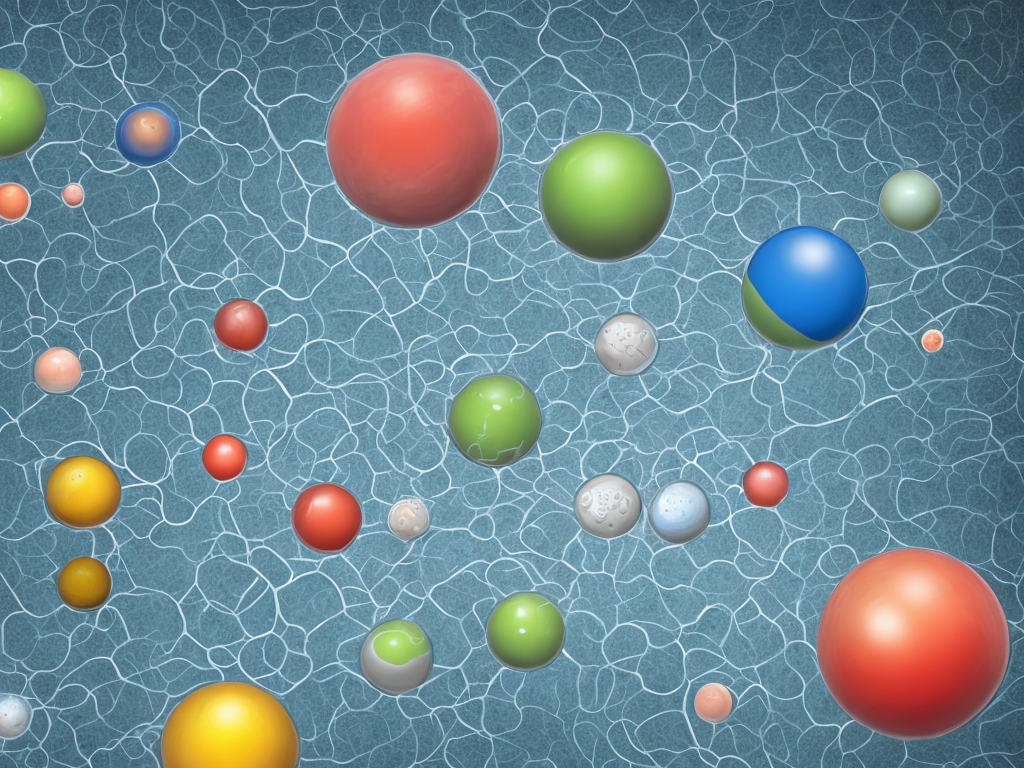
Atoms combine with each other in order to form molecules through chemical bonding. In chemistry, there are two main types of chemical bonds, which are ionic and covalent bonds. It is important to understand the difference between these two types of bonds as they have different molecular properties and applications.
Ionic Bonds
An ionic bond is formed when one or more electrons are transferred from one atom to another. The atom that receives the electrons becomes negatively charged, and the atom that loses electrons becomes positively charged. These charged atoms are called ions. Oppositely charged ions are attracted to each other, forming ionic bonds.
Ionic bonds usually occur between a metal and a non-metal. The metal atom loses electrons and becomes a positively charged ion, while the non-metal atom gains electrons and becomes a negatively charged ion. For example, when sodium and chlorine react, sodium loses an electron to form a positively charged ion, Na+, and chlorine gains an electron to form a negatively charged ion, Cl-. Na+ and Cl- are then attracted to each other, forming an ionic bond to create sodium chloride (NaCl), which is commonly known as table salt.
Ionic compounds have high melting and boiling points because of the strong electrostatic attraction between the oppositely charged ions. Ionic compounds are also usually solid at room temperature, and they conduct electricity when melted or dissolved in water.
Covalent Bonds
A covalent bond is formed when two or more non-metal atoms share electrons. The shared electrons are attracted to both atoms and hold the atoms together. Covalent bonds are much more common than ionic bonds.
There are two types of covalent bonds: polar covalent bonds and nonpolar covalent bonds. In polar covalent bonds, the electrons are shared unequally between the atoms, resulting in one end of the molecule having a slightly negative charge and the other end having a slightly positive charge. In nonpolar covalent bonds, the electrons are shared equally between the atoms, resulting in a molecule with no end having a charge.
Covalent bonds are important in the formation of molecules such as water (H2O), methane (CH4), and ammonia (NH3). Water is a polar molecule with a slightly negative end and a slightly positive end, which gives it unique properties such as surface tension and the ability to dissolve many substances. Methane is a nonpolar molecule, which is why it is not soluble in water.
Covalent compounds have lower melting and boiling points than ionic compounds because the intermolecular forces between the molecules are weaker than the electrostatic forces among ions. Many covalent compounds are gases or liquids at room temperature, and they do not conduct electricity because they do not have charged ions.
Differences Between Ionic and Covalent Bonds
The key differences between ionic and covalent bonds can be summarized as follows:
1. Electron Sharing: In ionic bonds, electrons are transferred from one atom to another, whereas in covalent bonds, electrons are shared between atoms.
2. Atom Types: Ionic bonds usually occur between a metal and a non-metal, while covalent bonds occur between two or more non-metal atoms.
3. Bond Strength: Ionic bonds are generally stronger than covalent bonds because of the strong electrostatic attraction between oppositely charged ions. Covalent bonds are weaker because they rely on the sharing of electrons rather than the attraction of opposite charges.
4. Melting and Boiling Points: Ionic compounds have higher melting and boiling points than covalent compounds because of the strong electrostatic attraction between ions. Covalent compounds have lower melting and boiling points because the intermolecular forces between the molecules are weaker.
5. State of Matter: Ionic compounds are usually solids at room temperature, while covalent compounds can be gases, liquids, or solids.
6. Conductivity: Ionic compounds conduct electricity when melted or dissolved in water because they have charged ions that can move freely. Covalent compounds do not conduct electricity because they do not have charged ions.
Applications of Ionic and Covalent Bonds
Ionic and covalent bonds have different molecular properties, which make them useful in different applications.
Ionic compounds are often used as salts or electrolytes in batteries, fertilizers, and chemical reactions. They are also used in medical applications as antacids and laxatives.
Covalent compounds are used in many everyday products such as plastics, textiles, and drugs. They are also important in biochemical processes, such as the formation of proteins and DNA.
In conclusion, the difference between ionic and covalent bonds depends on the type of atoms involved and the way in which electrons are shared or transferred between them. Understanding the properties of these two types of bonds is crucial to understanding the chemical and physical properties of different molecules.
 Self-Instruct
Self-Instruct